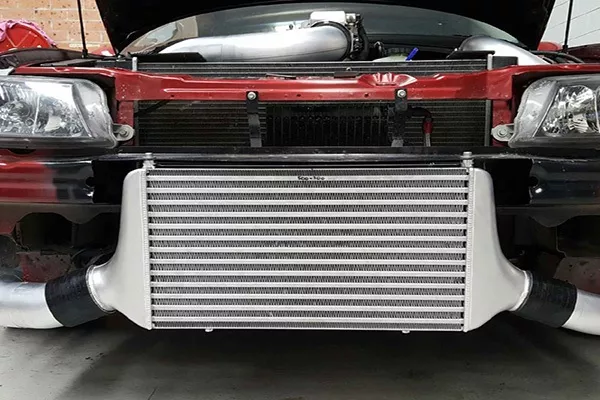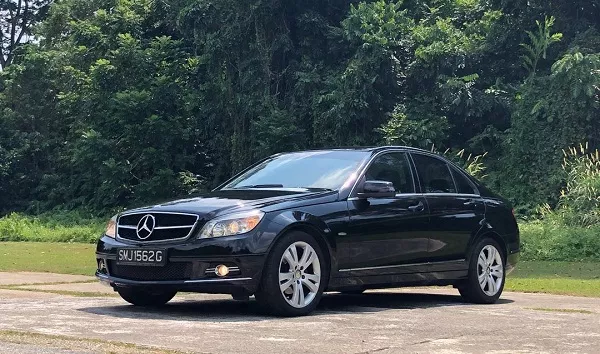Turbochargers and superchargers, forced induction devices sought after by racers, drifters, rally drivers, and car guys in general. Why? Because they will give your car more horsepower. Why is this important? My dear Philkotse.com readers, speed is important for any gear head.
While having more horsepower does not necessarily equate to more speed, it still is an important factor to consider when measuring a vehicle’s speed potential. While others out there enjoy speed, some also use these devices to generate more torque.
Those torque guys probably need it for lugging around trailers, off-roading, or just plain acceleration, which is just as fun!

Just like the says; forced induction provides more POWEEERR!
Turbos and superchargers are collectively known as forced induction systems. As the term implies, they force feed air into the engine’s combustion chamber, in order for it to burn fuel more efficiently, thus increasing a vehicle’s output and putting smiles onto car enthusiast’s faces everywhere.
You may be more familiar with turbochargers since many car manufacturers use them in their stock engines. The supercharger, on the other hand, may not be as common especially here in the Philippines, as these devices are usually installed in high displacement vehicles like the Dodge Charger Hellcat, as well as tractors, large trucks, and speed boats.
Turbochargers vs Superchargers - Which Is Better?
So how are they different then? In order to answer that question, we first need to dive deeper into each device and how they work. Are you ready?
>>> Related: What does naturally-aspirated mean? Pros and Cons?
1. Turbochargers
There are many different kinds of turbochargers or turbos. Small ones produce a modest 7 pounds per square inch (psi) of boost pressure, while bigger ones you see in top fuel dragsters or in drift cars can produce way more. Cars equipped with two of these devices are called bi-turbos, while those with four are called quad turbos.
There are also ways to install these depending on how they work, which is either sequential or parallel twin. Either way, they all function with one thing in mind: more power!

A typical turbocharger
Now we already know how a combustion engine works, which is like a cylinder-shaped pump. Air and fuel are sucked into the cylinder where they are compressed. The mixture is then ignited with a spark, creating a small explosion which in turn produces gases that are dumped through the exhaust system.
In order to squeeze out more power from the engine, we need to burn more fuel faster. Without introducing more air into the mix, the fuel is merely wasted. So in the past, when car companies wanted more from their engines, they turned to increase the displacement in order for more air to enter the engine.

These things have four turbos and are always ready
That era generally wasn’t a very good one in automotive history; the engines were heavy, cars were large and sluggish, and due to the larger strokes used by the pistons, engines were slow to rev.
In 1905 however, an enterprising Swiss engineer named Alfred Büchi created the first version of a turbocharger which used exhaust gases to power a device that fed denser air to the engine.
The turbocharged engines were useful for airplanes since they frequently encountered lower air pressure at high altitudes, and the denser air sucked in by the turbocharger helped normalize the engine pressure, hence the term “turbo normalizing”. Turbocharging goes beyond merely balancing the air pressure that aids in combustion.

Drift cars need additional power for longer burnouts and easier intentional oversteer
Now, exhaust gases are typically expelled as a result of the combustion process, right? So instead of dumping the exhaust gas immediately through the exhaust system, they are instead diverted into a chamber which houses a turbine. The gases spin the turbine as they pass through and finally exit through the exhaust system.
The spinning turbine, in turn, is connected to an impeller that also spins, causing fresh air to be sucked through an inlet (preferably a cold air intake) which directs the high-pressure, dense air into your engine’s intake manifold. The denser the air, the more oxygen it contains, the more oxygen the more gas you burn.
>>> Also check out:
- Engine configurations: A comprehensive guide to different engine layouts
- The ins & outs of car transmission and drivetrain
When you let off the throttle though, the positive pressure going to the intake manifold becomes reversed and threatens to go back into the impeller chamber. This is referred to as turbo flutter, where the built-up boost has nowhere to go; this affects performance since the turbine will spin backward and will take longer to spin in the right direction.
Turbos: How They Work | Science Garage
In order to combat this, turbocharged cars usually have a device called a blow-off valve or pressure relief valve which is connected with a vacuum hose that runs to the intake manifold, with the valve acting to release air pressure. This is also the reason for that distinctive and definitive “stutututu pssshhhh” sound from turbocharged cars.
Now it isn’t all fun and games with a turbo because as it turns out, high pressure equals high heat, especially with the part of the turbo that interacts directly with the exhaust gases. You can note that that particular chamber of a turbo will surely look more rusted out compared to the impeller chamber.
Now, the whole point of a turbo is to get denser air, but as the air gets hotter inside the turbo, its molecules become more separate, making the air less dense as a result. This is the reason why many cars using turbochargers also have intercoolers, which function somewhat like a radiator for your pressurized air.
Some cars like the Subaru WRX STI, 2018 Honda Civic Type R, the 2019 Audi A3, and the 2019 Ford Fiesta ST have larger grilles and inlets that let cool, fresh air flow into the intercooler.

Cars with turbos need intercoolers to produce more power efficiently
All in all, the turbo can be described as an air compressor. So now you may ask, what’s stopping me from buying the largest ever turbo for my car?
Well, the answer is; specific turbos are rated for specific exhaust outputs generated by your vehicle. In layman’s terms, the larger the turbo, the longer it would take to spin the turbine; in some really exasperating cases, the turbo wouldn’t even move at all.
This is what is known as turbo lag, and this is the reason why some cars have two turbos; one pushes air into another larger turbo to reduce the overall time for the spool up. A great example car for this is the 1981 Maserati Bi-Turbo.
2. Superchargers
Ever seen the Mad Max films? You remember the sound that the Interceptor Pursuit Special makes whenever Max pushes that red button attached to his car’s gear shifter. That melodious whine, the hellishly cool scream? Yup, albeit fictional and not totally accurate, that’s how a supercharger sounds and, to an extent, how it performs.
A supercharger, also called a blower or compressor, forces air into the engine just like a turbo. Actually, turbos can be considered a form of a supercharger. So what are the differences, then?
While turbochargers are spun by your car’s exhaust gases, superchargers instead work by borrowing power from the engine through a system of belts; in other words, superchargers are mechanically driven.

Superchargers are mechanically driven
Just like turbos, superchargers also have a chamber and a turbine which compresses air that allows for more fuel to be burned, hence providing more power.
The single most noteworthy advantage a supercharger has over a turbo is that the former can “spool” up faster and therefore encounters less lag than a turbo, providing faster delivery of power. Turbos require a buildup of exhaust gases, which can only happen when the engine reaches a certain amount of revolutions per minute (RPM).
Just like turbos, there is a myriad of choices when it comes to superchargers. One such type is called twin-screw supercharger, which can move a steady amount of air regardless of how fast or slow the parts are spinning, resulting in consistent boost all the time.
As you may have guessed from the name, this type of blower contains two screws which interlock with each other through oppositely shaped grooves. These draw in clean, cool air from the outside through the back of the supercharger unit, compressing it within the spinning screws and finally drive it out towards the front of the unit into the engine air intake.

A Nismo 350z equipped with a supercharger, which is the shiny thing in the middle
Another kind of positive displacement supercharger is called the Roots-Type supercharger, which incidentally is just like what Max’s Interceptor has. The Roots-type also uses screws in its design, similar to the twin-screw type.
The difference is, instead of having differently shaped screws, the Roots have uniform-shaped screws that push air from the top downwards to the bottom end of the supercharger unit.
You can commonly see these types in modified large, high displacement muscle cars and trucks. These were first used in Mercedes-Benz in its Kompressor line, the first-ever production cars with forced induction.
Because of the more consistent boost, one downside of superchargers is that they cause your engine to consume more fuel in comparison to cars with turbochargers.
Another is that supercharger units here in the Philippines, albeit easier to install than a turbo, can cost way more than the aforementioned. But that boost at low RPMs somehow makes up for it, right?

The Mercedes-Benz C180 Kompressor
3. Why do more and more cars being sold today use forced induction?
For one thing, manufacturers use turbochargers in order to produce powerful engines without depending too much on high displacement. This results in a much more economically sound car to run. This is what’s called engine downsizing.
Some good examples of downsizing are Honda and their turbocharged models such as the Honda Civic RS Turbo 1.5; although it has a smaller displacement than the naturally-aspirated Civic 1.8 E, the RS is capable of producing more horsepower, all the while maintaining sensible gas mileage figures.

Cars like the 2019 Honda RS use turbos for their smaller but fuel-efficient engines to produce more power
4. Which is better? The turbocharger or supercharger?
The answer to this question depends on whether you want instantaneous power or more fuel efficiency. If you want better mileage without sacrificing much of power, go for a turbo. But if you have deep pockets for gas money and you fancy driving around like your hero Mad Max, get a supercharger.
If you’re crazy and patient enough though, you can also install both a turbo and a supercharger. Something car guys like to call a twin-charged car, but that’s a story for another time.
>>> Click to get more helpful tips and advice for all car owners












